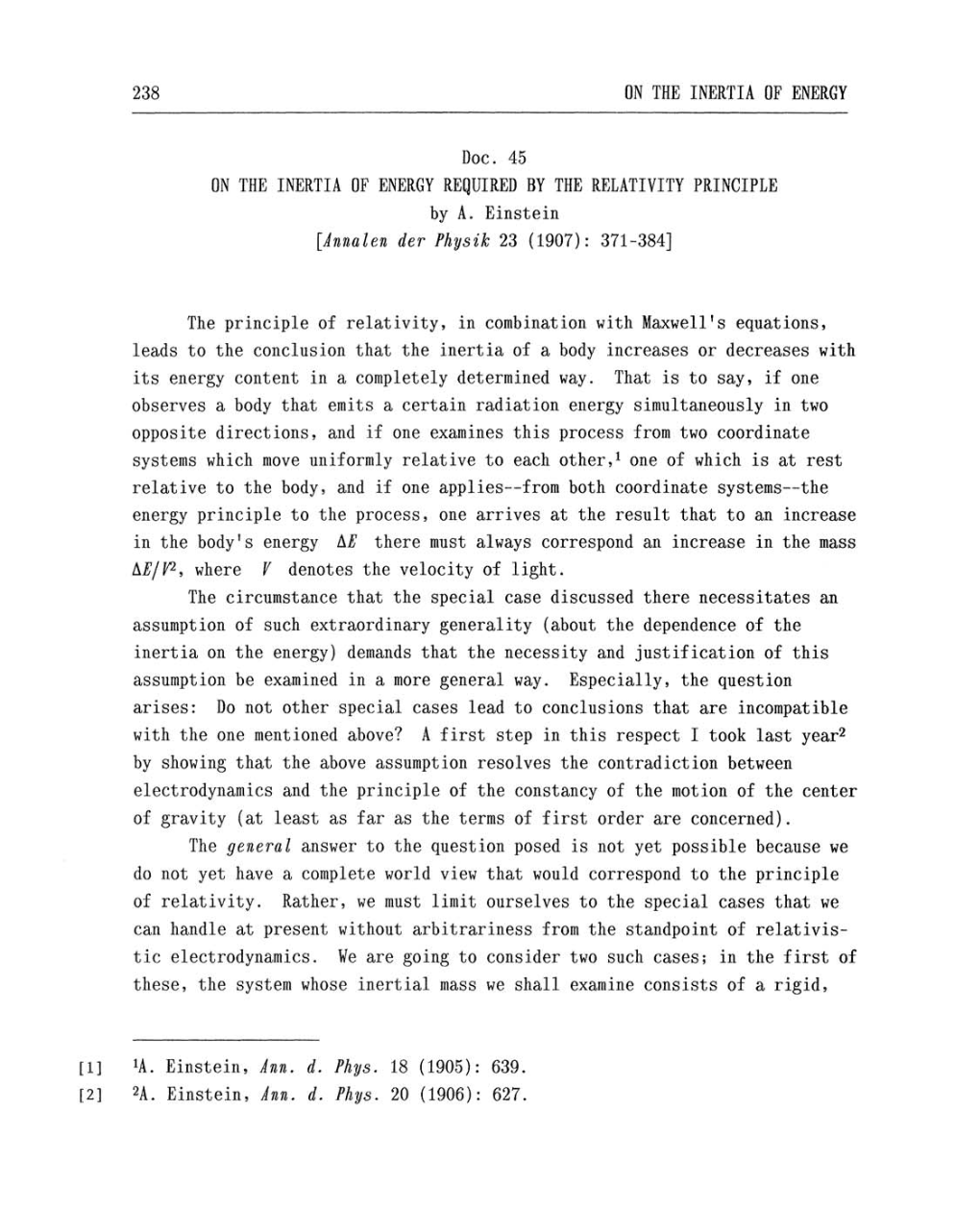238
ON
THE INERTIA
OF ENERGY
Doc. 45
ON
THE
INERTIA
OF ENERGY
REQUIRED
BY
THE
RELATIVITY
PRINCIPLE
by
A.
Einstein
[Annalen
der
Physik 23
(1907):
371-384]
The
principle of
relativity,
in
combination with
Maxwell's equations,
leads
to
the conclusion that the inertia
of
a body
increases
or
decreases with
its
energy
content in
a
completely
determined
way.
That
is
to
say,
if
one
observes
a
body
that emits
a
certain radiation
energy
simultaneously
in
two
opposite
directions,
and
if
one
examines
this
process
from
two
coordinate
systems
which
move
uniformly
relative
to
each other,1
one
of which is
at
rest
relative
to
the
body,
and
if
one
applies--from both coordinate
systems--the
energy
principle
to
the
process,
one
arrives
at
the result that
to
an
increase
in
the
body's
energy AE
there
must always
correspond
an
increase in the
mass
AE/V2,
where
V
denotes the
velocity
of light.
The
circumstance
that
the special
case
discussed there necessitates
an
assumption
of
such extraordinary generality
(about
the
dependence
of the
inertia
on
the
energy) demands
that the
necessity
and
justification of this
assumption
be examined
in
a
more
general
way.
Especially, the
question
arises:
Do
not
other
special
cases
lead
to
conclusions that
are
incompatible
with the
one
mentioned above?
A
first
step in
this respect I took last
year2
by
showing
that the
above
assumption
resolves the contradiction
between
electrodynamics
and
the
principle
of the
constancy
of
the
motion of
the
center
of
gravity
(at least
as
far
as
the
terms of
first order
are
concerned).
The general
answer
to
the
question
posed
is
not yet
possible
because
we
do not yet
have
a
complete
world view
that
would correspond to
the
principle
of
relativity.
Rather,
we
must
limit ourselves
to the special
cases
that
we
can
handle
at
present without arbitrariness
from
the
standpoint
of relativis-
tic
electrodynamics.
We
are
going
to
consider
two
such
cases;
in the first of
these,
the
system
whose
inertial
mass we
shall
examine
consists of
a
rigid,
[1]
[2]
1A.
Einstein,
Ann. d.
Phys. 18
(1905):
639.
2A.
Einstein,
Ann.
d.
Phys. 20
(1906):
627.
